Combined temperature and hydrostatic level sensors offer a comprehensive solution for monitoring liquid levels with enhanced accuracy. These sensors provide simultaneous measurement of both hydrostatic pressure and temperature, enabling precise level determination even when liquid density varies due to temperature fluctuations. This dual-output functionality makes them ideal for applications requiring precise level control and management.
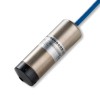 LMK458 Marine Approved Hydrostatic Level Transmitter - Marine approved level transmitter with 4-20mA output for measuring level of contents inside ship ballast, fuel, liquid cargo or wastewater tanks
LMK458 Marine Approved Hydrostatic Level Transmitter - Marine approved level transmitter with 4-20mA output for measuring level of contents inside ship ballast, fuel, liquid cargo or wastewater tanks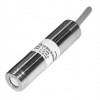 LMK307 Submersible Waste Water Level Sensor - Submersible waste water level sensor with optional intrinsic safety certification for monitoring the level of sewage and effluent in water treatment plants.
LMK307 Submersible Waste Water Level Sensor - Submersible waste water level sensor with optional intrinsic safety certification for monitoring the level of sewage and effluent in water treatment plants.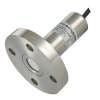 LMK457 Marine Approved Level Transmitter - Marine approved level transmitter with 4-20mA current loop output for shipbuilding with optional all CuNiFe construction for sea-water compatibility in ranges from 0.4 mH2O to 250mH2O gauge.
LMK457 Marine Approved Level Transmitter - Marine approved level transmitter with 4-20mA current loop output for shipbuilding with optional all CuNiFe construction for sea-water compatibility in ranges from 0.4 mH2O to 250mH2O gauge.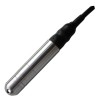 S12C SDI-12 Seawater Pressure & Temperature Transducer - SDI-12 protocol transducer for sensing water depth level and temperature in seawater, brackish water, tidal water, saline water or leachate.
S12C SDI-12 Seawater Pressure & Temperature Transducer - SDI-12 protocol transducer for sensing water depth level and temperature in seawater, brackish water, tidal water, saline water or leachate. S12S SDI-12 Coms IP68 Pressure and Temperature Sensor - Combined pressure and temperature sensor with a 1200 baud rate serial data interface as defined by the SDI-12 support group.
S12S SDI-12 Coms IP68 Pressure and Temperature Sensor - Combined pressure and temperature sensor with a 1200 baud rate serial data interface as defined by the SDI-12 support group. IMCTL Submersible Liquid Level and Temperature Transmitter - IP68 combined liquid level and temperature, dual 4 to 20 milliamp output pressure sensor with a 316L or Marine Bronze housing.
IMCTL Submersible Liquid Level and Temperature Transmitter - IP68 combined liquid level and temperature, dual 4 to 20 milliamp output pressure sensor with a 316L or Marine Bronze housing.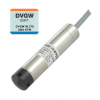 LMP307T Submersible Level and Temperature Transmitter - The LMP307T is a submersible level and temperature transmitter with a level sensing range from 1 to 250 mH2O and a temperature sensing range of 0 to 30°C up to 70°C.
LMP307T Submersible Level and Temperature Transmitter - The LMP307T is a submersible level and temperature transmitter with a level sensing range from 1 to 250 mH2O and a temperature sensing range of 0 to 30°C up to 70°C. IMSTL IP68 Water Temperature and Depth Transmitter - Stainless steel 316L waterproof probe for measuring both water temperature and depth and generating two separate 4-20mA current loop measurement signals.
IMSTL IP68 Water Temperature and Depth Transmitter - Stainless steel 316L waterproof probe for measuring both water temperature and depth and generating two separate 4-20mA current loop measurement signals.
- Water temperature depth sensor for cooling tower sump
- SDI-12 interface, 2 bar absolute, submersible water level sensor
- Borehole pump protection water level and temperature sensor for 60m depth
- 6m range 4-20mA submersible animal feed tank level and PT100 sensor
- Dual level and temperature monitoring in hotel water treatment tanks
- Certified submersible sensor for dual level and temperature monitoring in potable water tanks
- 200cm range 0-5Vdc output submersible road flood stream depth and PT1000 sensor
- Aquaculture submersible freshwater level & temperature transmitter
- 40 ftH2O Hydroelectric plant tailwater elevation & temperature sensor
- Submersible water level and temperature probe with SDI-12/USB interface for freshwater monitoring
Find out more about Combined Temperature and Hydrostatic Liquid Level Sensors to determine which product options and capabilities will best meet your application requirements.
Combined temperature and hydrostatic level sensors are engineered to deliver accurate and reliable liquid level measurement by incorporating both hydrostatic pressure and temperature sensing capabilities within a single, integrated unit. These sensors address the challenge of density changes in liquids caused by temperature variations, enabling precise level monitoring and control.
Advantages
- Enhanced Accuracy: Liquid density is directly influenced by temperature, affecting the accuracy of hydrostatic level measurements. Combined sensors overcome this by providing both hydrostatic pressure and temperature readings. This data allows external monitoring and control systems to accurately calculate the liquid level, compensating for density changes caused by temperature fluctuations.
- Simplified Installation: Integrating both measurements into a single device streamlines installation, requiring only one probe for both parameters. This is particularly advantageous in applications where space constraints limit the installation of multiple sensors.
- Cost-Effectiveness: Compared to installing and maintaining separate temperature and level sensors, combined sensors offer a cost-effective solution. This is especially beneficial in large-scale applications or where budgetary considerations are paramount.
Applications
The ability to accurately measure both hydrostatic pressure and temperature makes these sensors suitable for a diverse range of applications:
- Industrial Process Control: Precise level monitoring in tanks, vessels, and pipelines containing liquids such as chemicals, fuels, and wastewater, where temperature variations can significantly impact density and level accuracy.
- Food and Beverage Processing: Maintaining accurate levels in tanks and vats containing temperature-sensitive liquids like milk, juices, and syrups, ensuring consistent product quality.
- Pharmaceutical Manufacturing: Monitoring levels in vessels and reactors where precise temperature and level control are critical for maintaining product integrity and quality.
Selection Considerations
- Sensor Technologies: Combined sensors may utilize various sensing technologies, including piezoresistive pressure sensors, capacitive level sensors, and resistance temperature detectors (RTDs). The choice of technology depends on the specific application requirements, such as the type of liquid, measurement range, and accuracy needs.
- Output Signals: These sensors typically provide separate output signals for both hydrostatic pressure and temperature. Common output signal types include analog (4-20mA), digital (RS-485, Modbus), and HART. These signals can be easily integrated into process control systems, data loggers, or display units for monitoring and analysis.
- Materials of Construction: The sensor materials are selected based on the application environment and the properties of the liquid being measured. Common materials include stainless steel, PVDF, PVC and PP to ensure compatibility and long-term performance.
By providing simultaneous measurement of both hydrostatic pressure and temperature, combined sensors empower users with the data necessary to achieve precise level control, even under fluctuating temperature conditions. This capability optimizes process efficiency, reduces waste, and improves overall product quality in a variety of liquid-based applications.
